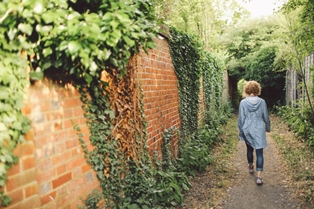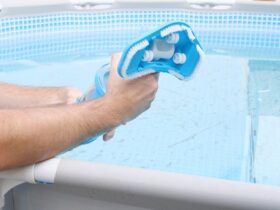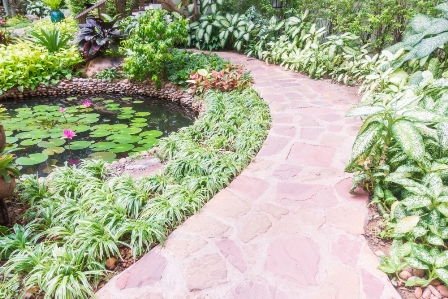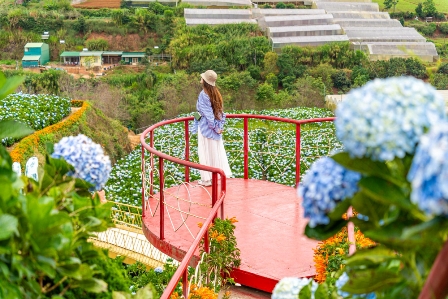Welcome to Garden Edging Expert, where we specialize in transforming ordinary gardens into extraordinary outdoor sanctuaries. Our passion for landscaping and dedication to perfection have made us the go-to destination for all your garden edging needs. With years of experience and a team of skilled professionals, we pride ourselves on delivering unparalleled quality.
Why Garden Edging Matters
Enhancing Aesthetic Appeal
Garden edging is not just about creating boundaries; it’s about elevating the visual appeal of your outdoor space. By defining the edges of flower beds, pathways, and other landscaping features, garden edging adds structure and definition to your garden, creating a polished and well-manicured look.
Weed Control and Maintenance
Beyond aesthetics, garden edging serves a practical purpose by helping to control weeds and minimize maintenance efforts. By creating a barrier between your lawn and garden beds, edging prevents grass and weeds from encroaching on your plants, reducing the need for constant weeding and trimming.
Durability and Longevity
When it comes to garden edging, durability is key. Our expertly crafted edging materials are built to withstand the elements, ensuring long-lasting performance and minimal upkeep. Whether you prefer metal, plastic, stone, or wood edging, we have options to suit every style and budget.
Choosing the Right Edging Material
Metal Edging
Metal edging offers a sleek and modern aesthetic, perfect for contemporary gardens. Its strength and durability make it ideal for creating clean lines and defining intricate landscaping features. Plus, its flexibility allows for easy customization to fit any garden shape or size.
Plastic Edging
Plastic edging is a cost-effective option that offers versatility and ease of installation. Available in a variety of colors and styles, plastic edging is lightweight yet durable, making it a popular choice for DIY enthusiasts and professional landscapers alike.
Stone Edging
For a timeless and elegant look, stone edging is hard to beat. Whether you prefer natural stone or concrete pavers, stone edging adds a touch of sophistication to any garden design. Its rustic charm and weather-resistant properties make it a popular choice for both traditional and contemporary landscapes.
Wood Edging
Wood edging lends a warm and organic feel to your garden, blending seamlessly with natural surroundings. From rustic railroad ties to sleek cedar planks, wood edging offers endless possibilities for customization and creativity. Plus, its affordability and easy availability make it a popular choice for budget-conscious gardeners.
Installation and Maintenance Tips
Preparing the Ground
Before installing garden edging, it’s essential to prepare the ground properly. Clear the area of any debris, weeds, and rocks, and ensure the soil is level and compacted. This will provide a stable foundation for your edging materials and ensure a clean, professional finish.
Installing the Edging
Once the ground is prepared, it’s time to install your chosen edging materials. Follow the manufacturer’s instructions carefully, ensuring proper alignment and spacing between each piece. Use stakes or anchors to secure the edging firmly in place, especially in areas with heavy foot traffic or soil erosion.
Maintaining Your Edging
Regular maintenance is key to preserving the beauty and integrity of your garden edging. Periodically check for any signs of damage or displacement, and make repairs as needed. Additionally, keep the area around the edging clear of debris and overgrown vegetation to maintain a neat and tidy appearance.
FAQs About Garden edging expert gardenedgingexpert.com
The best material for garden edging depends on your personal preference, budget, and the overall aesthetic you want to achieve. Some popular options include metal, plastic, stone, and wood. Metal edging offers durability and a sleek look, while plastic edging is affordable and easy to install. Stone edging adds a timeless elegance to your garden, while wood edging provides a natural and rustic feel. Ultimately, the best material is one that meets your specific needs and complements your garden design.
The cost of installing garden edging varies depending on several factors, including the type of material used, the size of your garden, and whether you choose to hire a professional landscaper or DIY. On average, you can expect to pay anywhere from $2 to $10 per linear foot for materials, with installation costs ranging from $5 to $20 per linear foot. For a more accurate estimate, it’s best to consult with a local landscaping company or home improvement store.
Whether you can install garden edging yourself depends on your level of DIY experience and the complexity of the project. Simple plastic or metal edging can often be installed by homeowners with basic tools and skills, while more intricate designs or materials may require professional assistance. If you’re unsure, it’s always a good idea to consult with a landscaping expert who can provide guidance and assistance based on your specific needs.
Some common mistakes to avoid when installing garden edging include:
Failing to properly prepare the ground before installation, leading to uneven or unstable edging.
Using the wrong type of edging material for your soil type or garden layout, which can result in premature deterioration or poor performance.
Not securing the edging properly, allowing it to shift or move over time.
Overlooking proper drainage considerations, which can lead to water pooling and damage to your landscaping.
Neglecting to maintain the edging regularly, leading to deterioration and unsightly appearance.
By being mindful of these potential pitfalls and taking the time to plan and execute your edging project properly, you can ensure a professional-looking finish that enhances the beauty and functionality of your garden.
Yes, there are several eco-friendly options available for garden edging that allow you to create a sustainable outdoor space. Recycled plastic and composite materials are popular choices for environmentally conscious gardeners, as they are made from recycled materials and are highly durable. Additionally, natural materials such as stone, wood, and bamboo can be sourced from sustainable sources and offer biodegradable alternatives to traditional edging materials. By choosing eco-friendly edging options, you can minimize your environmental impact while still enjoying a beautiful and well-defined garden space.
Conclusion
At Garden Edging Expert, we understand the importance of attention to detail when it comes to transforming your outdoor space. With our expertise and dedication to quality, we can help you unleash the full potential of your garden with expertly crafted garden edging solutions.












Find Us on Socials